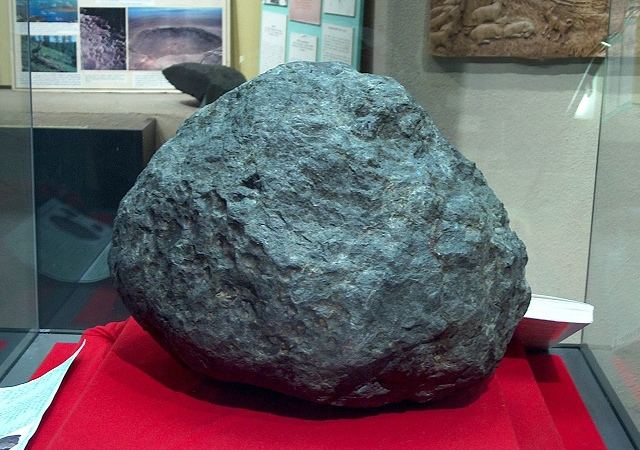Type Chondrite Group LL6 Region Ensisheim | Class Ordinary chondrite Country France Observed fall Yes | |
 | ||
The Ensisheim meteorite is a stony meteorite observed to fall on November 7, 1492 in a wheat field outside the walled town of Ensisheim in then Alsace, Further Austria (now France). The meteorite can still be seen in Ensisheim's museum, the sixteenth-century Musée de la Régence.
Contents
Features
The meteorite is an LL6 ordinary chondrite, weighing 127 kilograms (280 lb); it was described as triangular in shape, and it created a 1-metre (3 ft 3 in) deep hole upon impact.
Contemporary response
The fall of the meteorite through the Earth's atmosphere was observed as a fireball for a distance of up to 150 kilometres from where it eventually landed.
Sebastian Brant (1458–1521), satirist and author of "Das Narrenschiff" described the meteorite and its fall in the poem, "Loose Leaves Concerning the Fall of the Meteorite".
Residents of the walled town and nearby farms and villages gathered at the location to raise the meteorite from its impact hole and began removing pieces of the meteorite.
A local magistrate interfered with the destruction of the stone, in order to preserve the object for King Maximilian, the son of reigning Holy Roman Emperor, Frederick III. A piece of the meteorite was sent to Cardinal Piccolomini (later Pope Pius III) at the Vatican along with a number of related verses written by Brant.
Brant created broadsheets in Latin and German with a poem about the meteorite describing it as an omen. The fall is also described in Folio 257 of the Nuremberg Chronicle.
German painter and mathematician Albrecht Dürer possibly sketched his observation of the fall of the meteorite on the reverse side of his painting of St. Jerome in the Wilderness.
